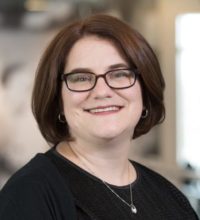An 82% drop in coronavirus cases among nursing home residents is a sign that vaccinations are working and are the key to a normalized life for residents, industry advocates say.
The drastic dip in resident cases and deaths (63%) in the past seven weeks was heralded by the American Health Care Association / National Center for Assisted Living in a Tuesday press briefing that marked one year since the U.S. outbreak. The numbers are nearing the lowest they’ve been since May, said Mark Parkinson, president and CEO of AHCA/NCAL.
Cases have declined more dramatically among residents and staff members than in the general population, which remains largely unvaccinated — an indication that the vaccines have something to do with the turnaround in nursing homes, Parkinson said.

“The good news is that this nightmare may be ending,” he said. “It’s obvious the vaccines are working, that decisions to prioritize staff and residents for vaccination were good ones, and fortunately, every governor in the country placed residents and staff at the top of the priority list [for vaccination].”
Parkinson and AHCA/NCAL Chief Medical Officer David Gifford, M.D., MPH, highlighted the “amazing accomplishment” of the federal Pharmacy Partnership for Long-Term Care Program in getting vaccines out to nursing homes in the two-and-a-half months since the first drug from Pfizer-BioNTech was approved. Every participating facility has now completed at least its first vaccination clinic, and second clinics are almost 100% complete in nursing homes and 75% complete in assisted living and other senior living settings, they reported.
Ending resident isolation
In the meantime, as more people are vaccinated nationwide, nursing homes are getting closer to ending the unhealthy isolation of residents, Gifford said. While he encouraged a focus on reopening and allowing visitation and activities to occur, he urged that rules be relaxed “safely and cautiously” while the U.S. remains in a vaccine transition period. Many potential visitors do not yet have access to a vaccine, he noted. And while the latest data show that approximately 80% of residents are accepting a shot, staff members lag behind — at around 40% uptake.
AHCA/NCAL and LeadingAge last week set a goal calling for 75% of nursing home staff members to be vaccinated by June 30. In December, AHCA/NCAL also launched a nationwide #GetVaccinated campaign to provide information to staff, residents and their family members with the goal of helping them make evidence-based vaccine decisions.
Fighting the variants
Vaccination and careful planning remains the key to success in fighting emerging SARS-CoV-2 gene variants as well, according to Gifford and other industry observers.
“The longer it takes for people to get vaccinated, the more time there is for variants to arise and possibly increase transmission,” Gifford said. “And that will affect the elderly, it will affect the people with chronic diseases, it will affect essential healthcare workers, teachers and everyone else out there.”
But the high rates of vaccination in nursing homes offers hope that the industry will continue to be protected, said Jennifer Carnahan, M.D., MPH, of Indiana University Center for Aging Research at Regenstrief Institute, Indianapolis.

“I think that one of the most important things is supporting our staff, having contingency plans, and being ready for worst-case scenarios,” Carnahan told McKnight’s Clinical Daily. “So on one hand I’m full of hope and optimism, on the other hand I think it’s really important that we plan and be ready [in case of setbacks]”.
There hasn’t been as much uptake yet of monoclonal antibody treatment, for example, Carnahan noted. These infused drugs have proven effective at easing the course of COVID-19 in residents who do contract the disease. This may be a clinical tool that more long-term care providers could consider using in the future, she said.
Another reason for optimism is that vaccine makers have the technology to manufacture variant-fighting drugs fairly quickly, Gifford added. “We may just need to have booster shots out there … so I think we will be able to battle [the variants],” he said.
A leading U.S. health official was more wary. The decline in community cases appears to have stalled and certain variants causing havoc in other countries have been making greater inroads in the United States, according to Centers for Disease Control and Prevention Director Rochelle Walensky, M.D., MPH.
“Please hear me clearly: At this level of cases with variants spreading, we stand to completely lose the hard-earned ground we have gained,” Walensky said in a Monday White House press briefing where she warned states about rolling back public health measures too quickly. “These variants are a very real threat to our people and our progress.”
Whatever happens next, it’s important to take a moment and acknowledge how far the nursing home industry has come before forging ahead, said Carnahan. “There’s fatigue among nursing home providers everywhere,” she said. “It’s really important that we celebrate the successes.”




